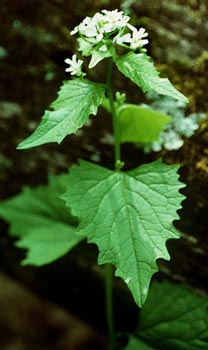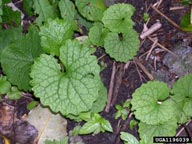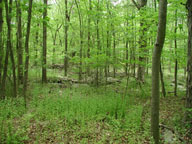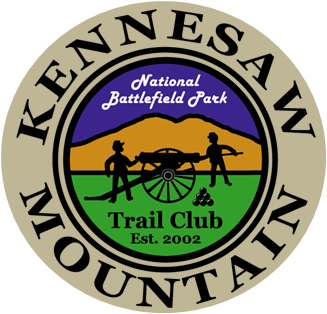


Kennesaw Mountain National Battlefield Park
Kennesaw, Georgia
- Volunteer forms = Adult / Minor(17 and younger)
- / Update 5/3/2025
- .

Invasive Plants at Kennesaw Mountain
NPS Garlic Mustard Control
 The Kennesaw Mountain Trail Club has joined with the National Park Service to rid the park of Garlic Mustard which is listed
as an "Invasive Species" in Georgia as well as the nation. Currently we have a yearly Garlic Mustard Pull where we have a day
that volunteers pull every plant they can find followed by spraying by the park service. To rid the park will take
doing this 3 to 5 years due to the life of a seed that falls to the ground.
The Kennesaw Mountain Trail Club has joined with the National Park Service to rid the park of Garlic Mustard which is listed
as an "Invasive Species" in Georgia as well as the nation. Currently we have a yearly Garlic Mustard Pull where we have a day
that volunteers pull every plant they can find followed by spraying by the park service. To rid the park will take
doing this 3 to 5 years due to the life of a seed that falls to the ground.Garlic Mustard is a rapidly spreading woodland weed that is displacing native woodland wildflowers. It dominates the forest floor and can displace most native herbaceous species within ten years. This plant is a major threat in Georgia to the survival of woodland herbaceous flora and the wildlife that depend on it. There are two modes of spread: an advancing front, and satellite population expansion possibly facilitated by small animals. Unlike other plants that invade disturbed habitats, garlic mustard has a high shade tolerance which allows it to invade mature woodlands, where it can form dense stands and totally crowd out native plants. This is a cool-season biennial herb that ranges from 12 to 48 inches in height as an adult flowering plant. Leaves and stems emit the distinctive odor of onion or garlic when crushed (particularly in spring and early summer), and help distinguish the plant from all other woodland mustard plants. First year plants consist of a cluster of 3 or 4 round, scallop edged leaves rising 2 to 4 inches in a rosette. Second-year plants generally produce one or two flowering stems with numerous white flowers that have four separate petals.  Garlic mustard is the only plant of this height in our woods with white flowers in May.
Fruits are slender capsules 1 to 2.5 inches long that produce a single row of oblong black seeds with ridged
seed coats. Stem leaves are alternate and triangular in shape, have large teeth, and can be 2 to 3 inches
across in fruiting plants.
Garlic mustard is the only plant of this height in our woods with white flowers in May.
Fruits are slender capsules 1 to 2.5 inches long that produce a single row of oblong black seeds with ridged
seed coats. Stem leaves are alternate and triangular in shape, have large teeth, and can be 2 to 3 inches
across in fruiting plants.
|


|

